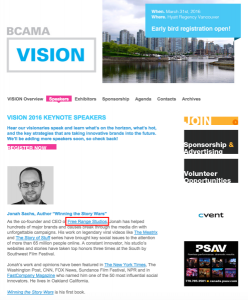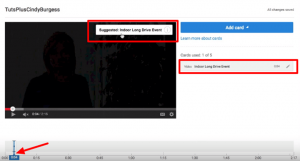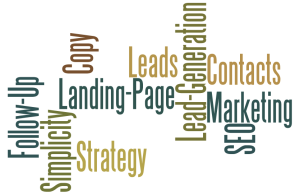— July 9, 2019
Make your meetings more productive by designing them to bring out the best in everyone
How many of the meetings you attended in the past week were as productive as you would have liked? Did everyone show up ready to participate? Were new ideas discussed, and outstanding challenges resolved?
Meetings, whether team or one-on-one, are often designed around a template or whatever feels most appropriate to the team manager. In many groups, it may seem like half the members find value in the meetings while the other half sees meetings as an obligation that gets in the way of their productivity. Much of this assessment from team members relate to their personal learning preferences. Some people prefer to process information internally; they like to have time to think about new information and quietly determine their thoughts. Others process information externally, and often don’t know what they think until they say it out loud.
Design Your Meetings for Maximum Engagement
Below are the two most common meetings: 1) Team and Project Meetings and 2) One-on-one meetings. When designed with the different thinking styles in mind, meetings increase productive dialogue, improve alignment and engagement, and reduce much frustration! Consider your team and one-on-one meetings as you review these below suggestions and identify how you can hold more effective meetings.
Team and Project Meetings
For most, team meetings feel like a painful event, and this feeling might be a result of the clash between Internal and External thinking styles. You might be one type while others on your team are another. If that is the case, be sure to take extra time, including your members who do not share the same thinking style.
Consider the experiences of an Internal Processor heading to a project kick-off meeting. People with this learning style like to know the purpose of the meeting, the meeting agenda, and the action items to be discussed well in advance. If given adequate time to think ideas through before the meeting, they show up with final thoughts ready to go and expect a short meeting to ensure everyone is on the same page. If they have not had time to prepare, they want to go to a meeting where assignments are handed out, and they can return to their workspace and take time to think everything through. An External Processor heading to a project kick-off meeting would prefer virtually the opposite. They want to walk into a brainstorming session that lasts a bit longer and where they can enthusiastically participate as the team hammers out which ideas should move forward. They arrive fresh with a notepad and pencil so they can take down ideas and love picking up and playing with the insights offered by their teammates to find the best ideas.
When thrown together, several potential clashes between these processing styles exist. Put an external processor into the internal processors ideal meeting, and they walk away feeling shut down like their ideas don’t matter, and every time they started working through their thoughts someone jumped in with solutions. When this happens frequently, teams risk losing a valuable member because they haven’t allowed that team member any space to work things out, and have likely lost several creative ideas as a result.
Flip the scenario and put an internal processor into the external processors ideal meeting. Now you have a person arriving at what they perceive as a mostly useless meeting. If they came prepared, they might feel like the only one who bothered. The meeting will go on much longer than they are comfortable with because now they have so many additional ideas to think through, but deep down internal processors sense that by the time they think about them everyone will have already moved on. Highly external teams may lose members who can offer thorough insight into ideas.
A Team Meeting Design that Works for External and Internal Processors
- Provide information and an agenda before the meeting so Internal Processors can know what to expect.
- Direct everyone to come to the meeting with ideas – not solutions.
- Review any ideas covered at the last meeting and encourage Internal Processors to share new insights they may have had since the previous session. (Note that external processors will likely jump in here as well. That is good!)
- Build in time for brainstorming new ideas to energize external processors. Set a strict time limit, so you don’t go down rabbit holes or lose anyone.
- Conclude the meeting with clear assignments or topics to cover at the next meeting.
- Keep meetings shorter, but have them more frequently.
- Create a shared document or Slack channel after the meeting to allow external processors to continue adding thoughts and ideas while allowing Internal Processors the opportunity to add their thoughts once they are ready.
One-on-One Meetings
Being intentional with your one-on-one meetings can lead to greater clarity and productivity for you and each member of your team. When you start by asking each team member to share their processing style with you, they will feel more comfortable processing their thinking in front of you. If you manage external processors, it is essential to give them a safe space to think their ideas out in, and letting internal processors know it is okay not to offer any ideas right away will build trust between you and your team.
One-on-One with External Processors
Schedule a longer one-on-one and hold the space open for them to think through the points you bring up. If you are an Internal Processor, your natural listening skills will come in handy. Ensure your employee that you are on the same page and encourage additional thoughts to come through. Ask your employee to come up with some actions they will take to address each topic and stick with it until they give you something concrete. The advantage of working with an external processor is that as long as you provide the space to think things out, they often reach a conclusion by the time you end the meeting.
One-on-One with Internal Processors
These meetings should be shorter than those you have with your external processors by design. Provide these staff members with a heads up on what you want to go over. Ideally, this will include anything from the previous meeting, along with new topics that have arisen. When you open the meeting, start by covering anything discussed in the last session and be prepared for them to offer you new ideas now that they have had time to think things through. At this time, ask for commitments to the new behaviors or actions you have proposed. Conclude with a review of commitments and a reminder of what you have introduced at this meeting. Make a note of anything to address at your next meeting. Ideally, this meeting lasts between 15 and 30 minutes and may happen more frequently than your meetings with external processors.
Impact on Team Achievement
Designing your meetings to bring out the best in everyone means you boost overall performance while increasing the level of trust amongst the entire group. Providing a space of understanding while allowing everyone to show up at their best reduces conflict, increases creativity, and ultimately saves you a ton of time.
Business & Finance Articles on Business 2 Community
(62)





